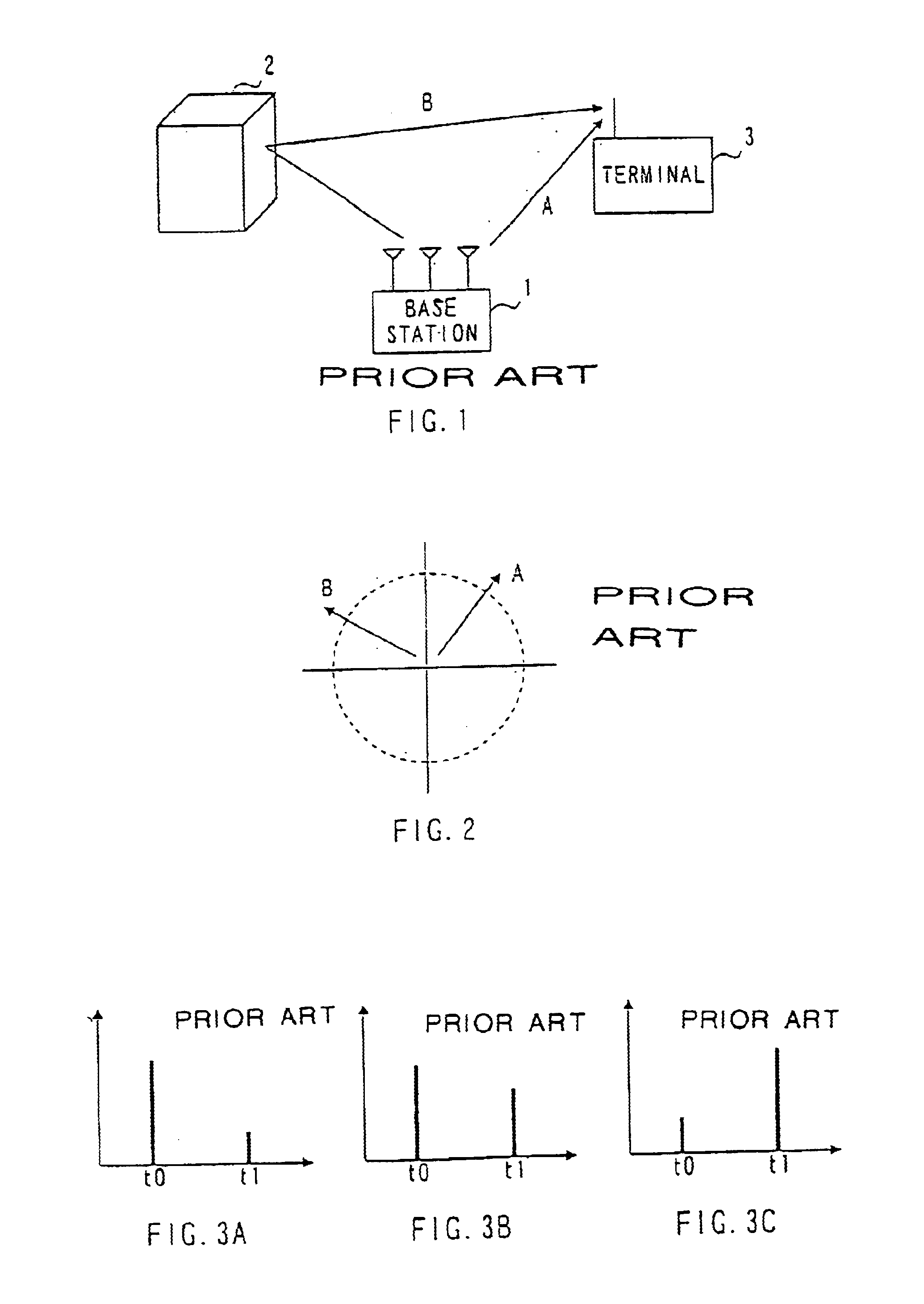Base station apparatus and radio communication method
a technology for radio communication and base stations, applied in the direction of transmission monitoring, electromagnetic wave modulation, power management, etc., can solve the problems of discontinuation or overlap of transmission signals, delay may be a major factor of general deterioration of communication quality
- Summary
- Abstract
- Description
- Claims
- Application Information
AI Technical Summary
Benefits of technology
Problems solved by technology
Method used
Image
Examples
embodiment 1
FIG. 7 is a block diagram showing a configuration of a base station according to Embodiment 1 of the present invention. FIG. 8 is a block diagram showing a configuration of a terminal according to Embodiment 1 of the present invention. FIG. 7 describes only the transmitting side. Here, a CDMA system using a spread spectrum (SS) communication system is assumed.
First, the calculation of the base station shown in FIG. 7 is explained. By way of example, suppose the number of antennas is 3. A transmission signal is modulated by modulation circuit 101. On the other hand, of a plurality of transmission weighting factors calculated by weighting factor calculation circuit 102 based on an advance information signal such as PHO shift, the most suitable one or two weighting factors are selected by weighting factor selection circuit 103 and multiplied by processing circuits 104 and 105. These transmission signals are then combined (multiplexed) by combination circuit 106, frequency-converted and...
embodiment 2
FIG. 11 is a block diagram showing a configuration of a base station according to Embodiment 2 of the present invention. The present embodiment assumes a CDMA system using a spread spectrum (SS) communication system. Embodiment 2 is explained using a base station to which adaptive array transmission based on adaptive array reception and its information is applied and the terminal at the other end of communication shown in FIG. 8. By way of example, suppose the number of antennas in the base station is 3.
First, the uplink is explained. The terminal on its transmitting side modulates a transmission signal by modulation circuit 207. This modulated signal is frequency-converted and amplified by radio transmission circuit 208 and transmitted from the antenna via antenna duplexer 201.
The base station sends signals received from the antennas to radio reception circuit 502 via antenna duplexers 501. Radio reception circuit 502 carries out amplification, frequency conversion and A / D conversi...
embodiment 3
The present embodiment describes a case where PHO is applied to a TDMA transmission system. A radio communication apparatus in this case has basically the same configuration as that of the base station shown in FIG. 7. It is different from the base station shown in FIG. 7 in that it has a different combination circuit.
A TDMA transmission system performs transmission in a time slot configuration as shown in FIG. 15. In the TDMA transmission system, it is desirable to suppress multi-path propagation by transmitting signals to either path A or path B. In this case, each signal is transmitted using a separate slot.
The combination circuit in this case contains transmission level control circuit 1003 as shown in FIG. 16 that individually controls the transmission level of each signal subjected to a product sum calculation. In this configuration, a signal subjected to a product sum calculation is multiplied by coefficients by multiplication sections 1001 and 1002, respectively. Then, signa...
PUM
 Login to View More
Login to View More Abstract
Description
Claims
Application Information
 Login to View More
Login to View More - R&D
- Intellectual Property
- Life Sciences
- Materials
- Tech Scout
- Unparalleled Data Quality
- Higher Quality Content
- 60% Fewer Hallucinations
Browse by: Latest US Patents, China's latest patents, Technical Efficacy Thesaurus, Application Domain, Technology Topic, Popular Technical Reports.
© 2025 PatSnap. All rights reserved.Legal|Privacy policy|Modern Slavery Act Transparency Statement|Sitemap|About US| Contact US: help@patsnap.com



